“One of the key characteristics of CNC machining is its ability to produce parts with tight tolerances and excellent repeatability, enhancing overall production reliability.”
CNC machining involves using computers to control the machines that make cuts on the relevant materials. It is usable with various materials, such as foams and hard metal. It is used in the making of furniture and the making of turbine blades. They include accuracy, surface finish, quantity, material, and the part’s complexity in influencing the price. This article will mainly discuss how the cnc machining process operates, the kind of material that it deals with, and in which industry it is applicable.
What is CNC Machining?
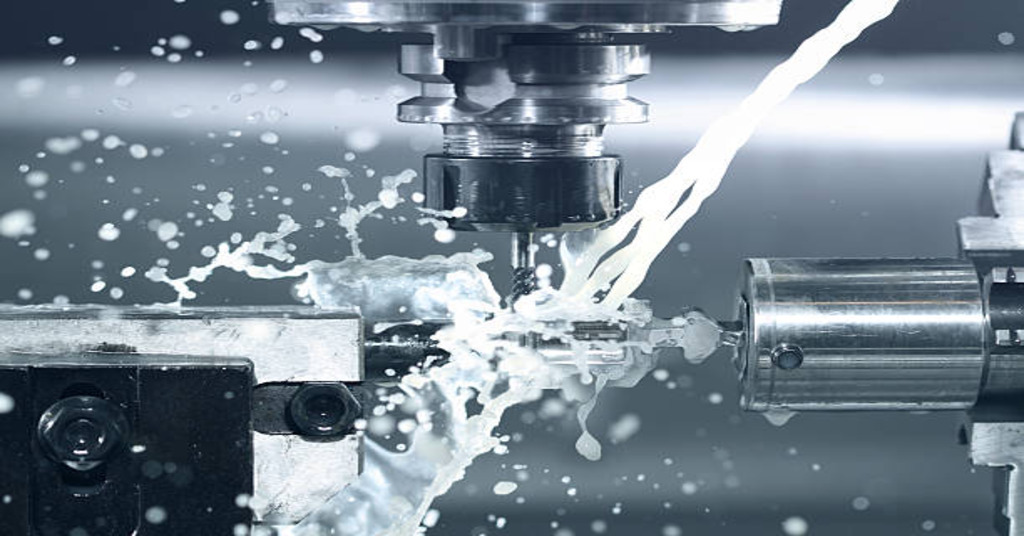
CNC machining
CNC machining is a manufacturing process in which the object is produced from a solid material known as the blank or workpiece by cutting tools. CNC machining is different from 3D printing or injection molding in that it does not add or shape material but instead subtracts or removes it; this fact influences its advantages, disadvantages, and design.
This manufacturing technique produces accurate and high-quality physical parts from a CAD file and does not require tools. Because of its automation, CNC is also suitable for short runs and a moderate number of similar products. CNC machines are versatile and can cut on many types of material, metals such as aluminum, steel alloys, brass, and plastics such as ABS, Delrin, and Nylon. Foam, composites, and wood are also used in cnc machining processes.
The CNC process involves several steps: First, an engineer has to design the part using a computer-aided design or CAD. Then, a machinist translates the CAD design into a CNC program (G-code). This code is further transformed into (M-codes) and allows machines to the intended design equipment, part, or product. Finally, the CNC system alone is responsible for the precision machining operations that change the geometry of the material to the desired geometry of the final part.
(Here is our guide to more details about G-codes and M-codes. You can get a deeper insight from Mastering CNC G-Code and M-Codes for CNC Machining.)
Try Prolean Now!
4 Stages of the CNC Machining Process
The following are the four stages of CNC machining:
Stage 1: CAD Model Design
The first step is to develop a computer-aided design model using CAD software to create a two- or three-dimensional model. CAD can be in two forms; free CAD and paid CAD. CAD modeling is usually relatively easy to master when it comes to creating models. However, if a part is complicated, then it may require the services of an experienced designer to get the right design. The CAD model is the digital version of the final design that is to be produced.
Stage 2: Converting the CAD Model into a CNC File
CNC machines require G-code to function correctly. The CAD model must be converted to G-code. Some of the CAD software can directly output the G-code files. CAM software assists in the conversion process to be as efficient as possible. There are free tools, but they are not as developed as the paid ones. G-code is the instructions that are followed by the machine to move and perform operations.
Stage 3: Setting Up the CNC Machine
A CNC machine controls the cutting tools to produce high-quality products. It is imperative to set up the workpiece properly to get the desired results in machining. Ensure that the workpiece is well anchored on the machine bed. Adjust the cutting tools and other machine settings. Make sure that all the dies and fixtures are appropriately positioned. Make sure that the machine configuration is as per the design. This stage is like warming up a printer before it is used to print.
Stage 4: Performs the Machining Operation
Begin the CNC program by pressing the machine’s control panel. Choose the options from the prompts to set specific settings and options. Once the program starts, the machine runs on its own. It goes on until the completion of the program or when an exception is encountered. This can be done by operators if there is a need to stop the machine. Machining can also be affected by power disruptions.
Historical Overview of CNC Machining
CNC evolved from NC technology, which started at the Massachusetts Institute of Technology in 1952. The earlier NC technology was in 1949 and was patented in 1958 as CNC, which was a significant boost to the automation process. The early ages of mechanical machining can be described by the discovery of a bowl made with the help of a lathe, which is dated 700 B.C. Italy. The initial steps of automation in machining were first started by using steam-powered machines in the 18th century. The first CNC system was designed at MIT in the late 1940s using punched cards. It was the basis of modern CNC systems was laid. After the use of computers in the 1950s and 1960s, CNC technology came onto the scene and enhanced the manufacturing industry through the use of computer control. Currently, CNC machines can be regarded as quite sophisticated robotic systems capable of performing diverse operations on several axes with the help of various tools that enhance the productivity and precision of contemporary industrial manufacturing.
CNC Machining Techniques For Part Making
Now it is time to look at the CNC machines mainly used for material removal by cutting tools, which are general-purpose and versatile besides these, laser cutting machines, plasma cutting machines, and EDM machines. are other CNC machine techniques
3-Axis CNC Machining
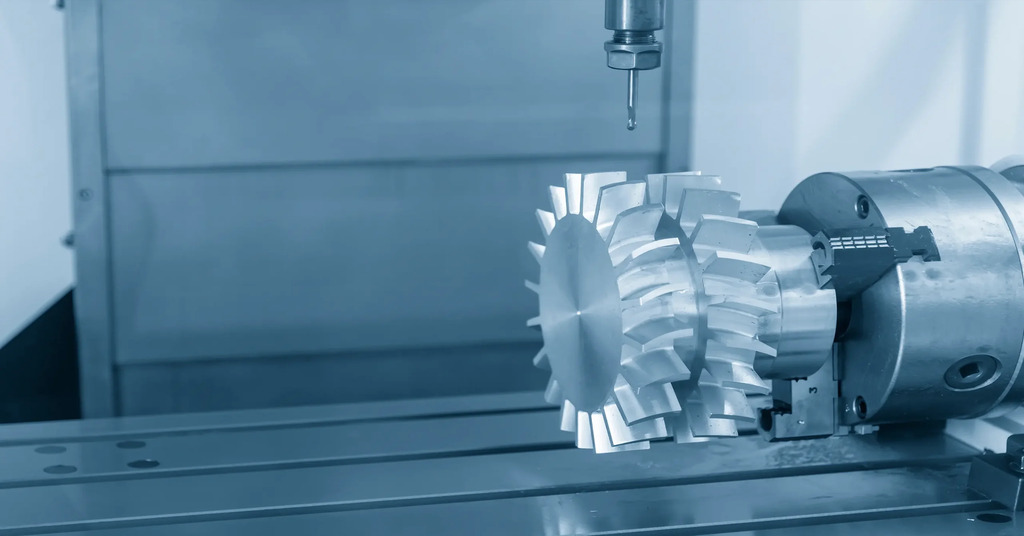
3-axis CNC machining
Among the first types is the 3-axis CNC machine used in CNC milling and CNC turning. These machines allow the cutting tool to move along three linear axes relative to the workpiece: It moves in four directions; that is, in the horizontal plane, in the vertical plane, forwards and backward, and up and down.
CNC milling, for instance, involves fixing the workpiece directly on the machine bed or in a vice. High-speed rotating cutting tools or drills are used to cut the material from the workpiece. These tools are mounted on a spindle that translates in the three linear directions.
3-axis CNC milling machines are widely used because they can generate simple geometries well. They also do not need much programming and are relatively easy to run, thus guaranteeing that the first machining costs are kept down. However, the major drawback of 3-axis CNC milling is the limited access of the tool to the workpiece compared to 5-axis CNC milling. Since there are only a few axes that can move the tool, it becomes pretty challenging to reach some of the regions of the workpiece. This is even worse when the workpiece has to be rotated several times, which adds to the labor and machining costs. (Learn more about 3-Axis VS 5-Axis CNC Machines)
CNC Turning
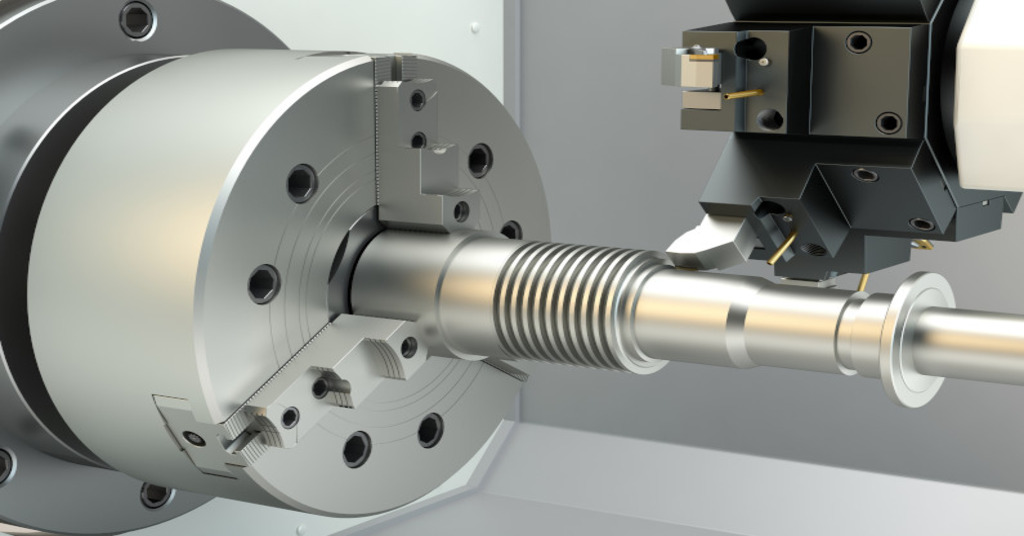
CNC turning
CNC turning is usually performed on a lathe where the workpiece is mounted on a spindle and rotates at high speeds. A center drill or another cutting tool remains in a position to remove the outer or inner periphery of the part in radial and lengthwise motions.
CNC lathes are much more preferred because they can produce the parts faster and at a lower cost per part than CNC mills, which is advantageous when many parts are to be manufactured.
However, the major disadvantage of CNC lathes is that it can only produce cylindrical form parts such as screws or washers. With regard to this, other processes may include CNC milling to add different features to the part in question. The required geometry can also be produced in one pass with the help of 5-axis mill-turning CNC centers.
5-Axis CNC Machining
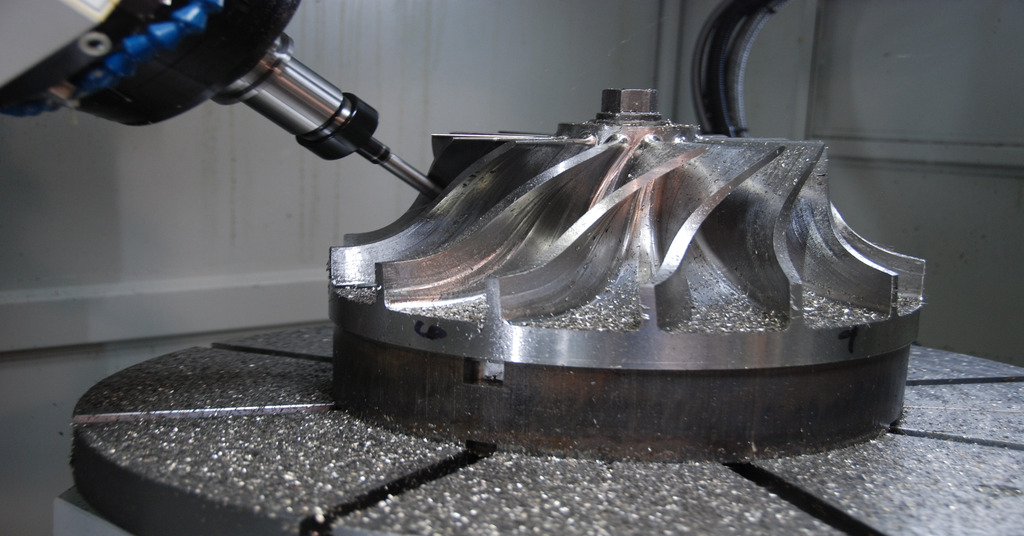
5-axis CNC machining
5-axis CNC machining encompasses various configurations: These are 5-axis CNC milling, continuous 5-axis CNC milling, and mill-turning centers with live tooling. These systems integrate extra DOFs into the conventional milling or lathe processes. For instance, the axes of 5-axis CNC milling centers can revolve around the machine bed, the tool head, or both, and the machine bed and the tool head can also move in three directions.
The functions performed by these machines are diverse and need specific instruments and professional operators, and all these factors raise the price of the machines. However, for complicated or metal parts where topology optimization is required, 3D printing is better at other times.
3+2 or 5-axis CNC milling machines are used in the machining processes where the cutting tool can move in three directions. In operation, the machine bed and tool head can be rotated, and this is how the position of the workpiece can be changed without needing to move the workpiece physically.
The primary benefit of indexed 5-axis systems is that the process is faster and more accurate than 3-axis CNC mills when interacting with parts with complex shapes. However, they are not as versatile as the continuous 5-axis CNC machining and do not have free-form cutting.
5-Axis CNC milling machines continuously allow the cutting tool to move in all three linear directions along the rotational directions regarding the workpiece during all operations. This arrangement makes it possible to manufacture components with complex and organic forms that cannot be made with the same accuracy using other techniques.
CNC Boring
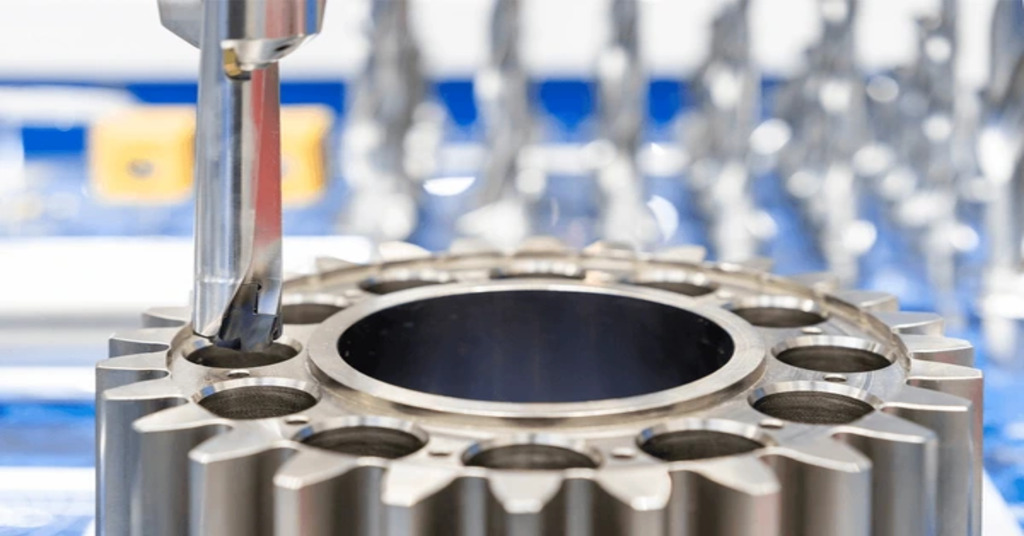
CNC boring
Milling machines, especially those with CNC technology, are used to position and automatically move the cutting head with high precision. The CNC boring itself is the operation of making a hole more significant than the required size and nothing more than that. This can be done by feeding the workpiece in rotation against a stationary cutter feeding the rotating cutter against a stationary workpiece, or using a fixed knife against a rotating workpiece. Boring can also be done horizontally, vertically, or at any angle. Usually, the speed of the operation is lower, and feed rates are reduced to minimize chatter and noise, thus resulting in a better surface finish.
Related To: The Ultimate Guide to China CNC Machining Services
Try Prolean Now!
Factors Contributing To CNC Machining Costs?
The following factors influence the machining cost of part projects.
Equipment and Machinery
Some of the tools that are used in CNC machining include milling machines and lathes. The initial investment for a CNC milling machine ranges widely: the basic models would cost roughly 50,000. In comparison, the complex multi-axial models would cost over half a million dollars. These costs include the costs of setting up the system, costs of maintaining the system, and other costs that have a direct impact on the cost of the parts produced.
Tooling Costs
This is true that the choice of cutting tools influences the machining cost straightforwardly. For example, cemented carbide tools with high wear, heat, and other types of stress resistance, may cost about $ 100 per piece, while less complicated tool steel may cost about $ 40 per piece. Moreover, tooling cost is a part of the setup, but it increases the efficiency and precision of the manufacturing process.
Material Costs
The type of material used is one of the most critical aspects that define the cost of CNC machining. Pricing is dependent on the type of material and the grade of the material:
- Aluminum is bought at roughly $2 per pound.
- Stainless steel can be purchased at $5 to $20 per pound, depending on the grade and current market price.
- The material cost also depends on factors such as strength, corrosion resistance, and ease of machining.
Design and CAM Preparation
The components to be machined are first designed on the computer with the help of a CAD (Computer Aided Design) system. The setup costs for design optimization and CAM (Computer-Aided Manufacturing) programming vary based on complexity: The design optimization and CAM programming costs are based on the following:
- CAD design usually ranges from $500 to $5,000 for a project, depending on the part’s complexity and the optimization level.
Manufacturing Volume
The production volume in CNC machining directly affects unit costs. Because setup costs do not vary, spreading these costs across more parts reduces the cost per part. For example, it may be cheaper to manufacture 100 parts than to manufacture 10 parts because of the cost of scale and efficient use of machines.
Finishing Operations
Other operations, such as surface treatment and quality control, also impact the cost of the CNC machined parts. Other fees, for instance, anodizing or powder coating of the operations, cost about $10 to $50 per part. These processes improve the aesthetic and functional properties of the project but are linked to increased costs.
Related To: CNC Machining Cost Optimizing Strategies
Common Materials for CNC Machining
Various materials can be processed by CNC machines, and all these materials have cutting conditions, such as speed and feed. The most commonly used materials include
Metals
Metals are the most common materials with exceptional machineability used in CNC machining among all the materials used in this process. These machines can work on any type of metal, from the relatively easy-to-machine CNC titanium and brass to the complicated nickel supplies like Inconel. These are used for fabricating metal prototypes, such as injection molds, shafts, gears, etc.
(Learn more about material properties and machining attributes from our comprehensive guides, Aluminum Heat Sink Production with Advanced CNC Machining Techniques.)
Plastics
Almost all plastic parts are commonly manufactured through injection molding, but occasionally there is the use of cnc machining to shape some of the thermoplastic material parts. The most popular types of materials are ABS, nylon, and polycarbonate. Valves bodies, bushings, and prototypes for injection molding are made using plastic machining since they are cheaper than the actual injection molding tools; these parts are tested for functionality before the actual injection molding tools are made. (Learn more about Plastic CNC Machining – Types of Plastic for CNC Machining)
Wood
CNC routers are primarily employed in cutting wood and are comparatively cheaper than most metal-cutting CNC machines. Wood machining is widely used in woodworking, especially in the processing of decorative wood. Some of the uses include the production of furniture, windows, and decorative doors, among other uses of wooden products.
Foam
Closed-cell and open-cell polyurethane foam is also applied to CNC machining. Foam blocks can be carved with the help of CNC routers to make packaging that will be exclusive to the required item and its value. Another example of the product is the foam inserts that are used in toolboxes, and the primary function of such inserts is to prevent tools from moving around during transportation.
Composites
CNC machining is also used to operate composite materials such as aramid, fiberglass, and carbon fiber. These cnc composites are rigid materials and quickly blunt the cutting tools. In aerospace and marine industries, the composites are cut to include fastener holes and trim parts after molding.
CNC Machining Advantages
Precision CNC machining has several benefits. Let’s explore some core ones;
Precision and Accuracy
CNC machining can be described as a process that is defined by the capacity to achieve high precision in the working process because of the control of the tool and the operation of the machine. This makes it possible for the parts manufactured to have small CNC machining tolerances and accurate dimensions from one batch to the other, and quality is kept high in different areas.
Efficiency in Production
The other advantage of CNC machines is that they are fast since they are efficient in material removal rate and geometric production. This capability assists in reducing the production cycle time and enhances manufacturing flexibility to satisfy the customers’ needs.
Cost-effectiveness
There are some expenses that are incurred when beginning CNC machining, but in the long term, fees are significantly less. It helps to reduce the cost per unit in the long run by reducing the number of sets that may be required to produce a particular product, properly using the resources, and reducing wastage. The second advantage is that automation reduces the extent of employing labor while at the same time enhancing the firm’s productivity.
Advanced Technological Capabilities
Some features of modern CNC systems are multi-axis machining and automatic tool changers. Such features make it possible for the machines to work on the various processes in the machining operations with minimal or no input from man. This leads to higher production rates and versatility in the production line with minimal cnc machining defects.
Versatility Across Materials
CNC machines can operate on any type of material, including metal such as aluminum, steel, and titanium, plastics such as ABS and nylon, and composite material such as carbon fiber. The processing of each material type is different according to the material, and it can be used in many industries.
Try Prolean Now!
Comparing CNC Machining To Other Fabrication Techniques
Let’s differentiate cnc manufacturing process from other fabrication methods.
3D Printing

3D printing
Digital designs and 3D printing build the components from different materials in layers, which is suitable for rapid prototyping and mass customization. Nonetheless, it is relatively slower in the production rate, and the type of material that can be used in production compared to CNC machining is most appropriate for large-scale production.
Injection Molding
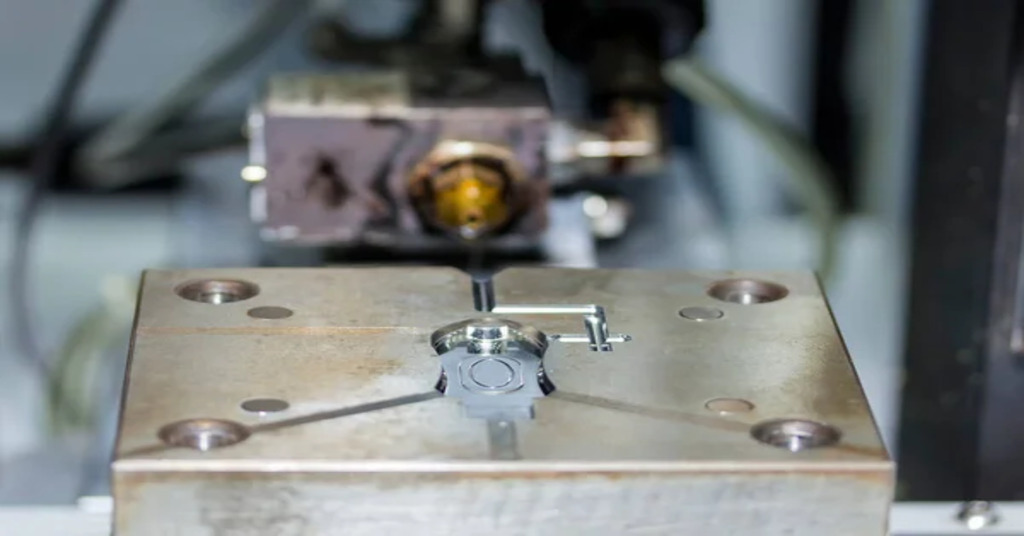
Injection molding die
Injection molding forces the material through a nozzle into a mold to produce large numbers of similar items quickly and cheaply. This process is most suitable when there is a need to make many products at once, and the final products should be cheap, of high quality, and produced at high rates, especially in industries that require high turnover rates. If you want to learn how both are distinct from each other by comparing their pros and cons and conditions to choose from, here’s our helping guide, CNC Machining Vs Injection Molding: What are the Differences?
Die Casting
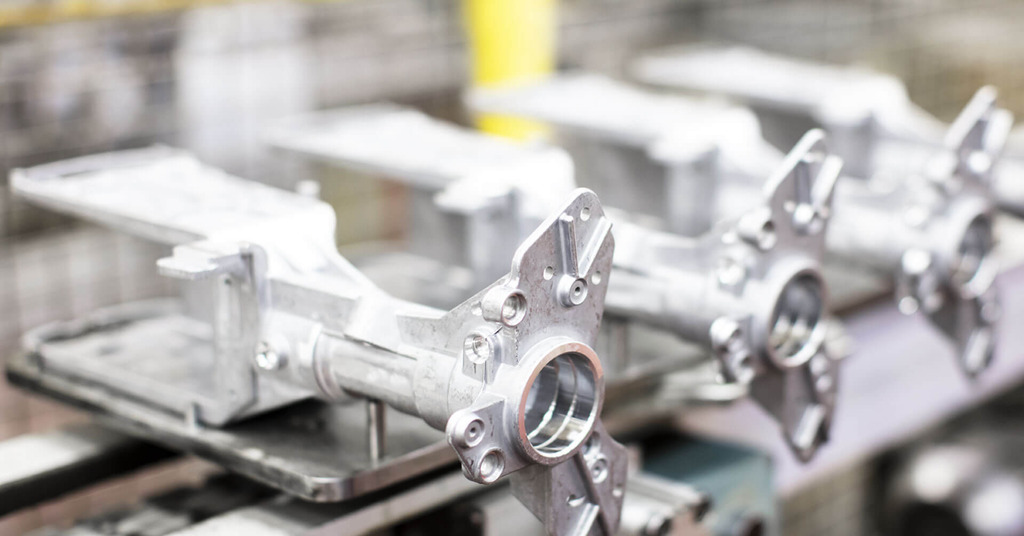
Die casting
Die casting is a technique of forcing molten metal into molds at high pressure to create thin-walled complex components. It is instrumental in the automobile industry for making automobile frames and aircraft bodies and in the manufacturing of machines and tools where strength, durability, and accuracy are essential.
Basic Terminologies Used In CNC Machining Part Manufacturing
Many digital software are impeded for designing parts in macro to micro CNC machining projects. Some most commonly employed software are given by;
Computer-Aided Design (CAD)
CAD is significant in CNC machining since it involves designing the part through a computer and creating 2D or 3D models. It divides designs into segments that are easily visualized and prepared for production if the design is complex. Some of the popular CAD software include AutoCAD and FreeCAD, but FreeCAD is more user-friendly. CAD makes it possible to create accurate models and prescribes the intricate details of the part’s design because the design is improved before manufacturing.
(Do you want to learn more about interpreting CAD 2d and 3d models in computerized machining? Here are our detailed guides, 2D Drawing Interpretation for CNC Machining & A Guide to Interpreting 3D Drawings for CNC Machining)
Computer-Aided Manufacturing (CAM)
CAM is an essential step in CNC machining because it generates machine code from CAD files. This automation is advantageous in optimizing machining instructions from the time of designing the concept to the manufacturing time. CNC machines are connected to CAM software, which helps determine the best tool paths and manufacturing processes and hence enables the accomplishment of complex movements within the shortest time and with a lot of accuracy. This leads to efficiency improvement because some of the processes are automated, and the utilization of CNC machines is well-controlled.
Distributed Numerical Control (DNC)
The DNC system allows several CNC machines to be connected to a server for data processing and command transfer. This setup improves the control of the machining operations, especially in the areas that are restricted by the memory of the individual machines.
Manufacturing Data Collection (MDC)
Manufacturing Data Collection (MDC) is vital for obtaining the state of the CNC machines and operators on the production line at a specific time. It controls the primary indicators of production and KPI and, as soon as possible, identifies the critical points. The MDC software helps CNC machining manufacturers enhance line efficiency based on the data and the understanding of manufacturing acquired.
G-code and M-code
G-code and M-code are significant in CNC machining because they control the motions and activities of the equipment. G-code is a language of codes that is used to control the axes (X, Y, Z) and tool paths during the machining processes. It is a mix of alphabets and numbers. Every symbol on the G-code is equal to some movements that are supposed to be done by the machine and, therefore, are expected. On the other hand, M-code controls different aspects, such as the coolant flow and tool change, among others, making the CNC machines more versatile in the manufacturing processes.
Try Prolean Now!
Small Batch Vs. Large Batch Production: Which One To Choose?
Small-batch and large-batch production both have advantages and disadvantages; therefore, the choice depends on the needs of the business. Here is a comparison to assist you in your decision.
Small Batch Manufacturing
Small batch manufacturing involves the production of a few quantities of products. It is suitable for new companies and those with limited capital to invest in their business. It is also helpful in introducing new products to the market. Usually, it is a small production batch that ranges from ten to a few hundred units. This method is commonly applied during the prototyping stage. It assists in the enhancement of products before the actual production of large quantities is initiated.
Benefits of Small Batch Manufacturing
The following are the benefits of small-batch manufacturing;
Small batch manufacturing is very flexible. Organizations can easily alter designs or processes in the business environment. This is useful for testing and calibration purposes. It also enables the customization of the product. It becomes easy to address the specific needs of customers. Another advantage is that initial costs are also lower. Lowering the number of units produced directly results in less spending on materials and equipment. This reduces financial risk. It is beneficial for start-ups and small businesses.
Limitations of Small Batch Production
Small batch manufacturing has the following disadvantages:
However, there are drawbacks. One disadvantage is that the per-unit cost is higher than the other production methods. The fixed costs are distributed over a smaller number of units. This makes each unit more expensive. Challenging large manufacturers becomes more difficult. The other challenge is that the production time is longer than the time to produce the aluminum door. This means that producing fewer units can be time-consuming. This can inhibit the firm’s entry into the market and ability to deliver orders on time.
Large Volume Manufacturing
Mass production or large-volume manufacturing means the production of many products. It is suitable for organizations with a constant flow of customers. Usually, it refers to creating a large quantity, be it thousands or millions of items. This method helps to maintain the continuous availability of the products in the market.
Benefits of Large-Volume Manufacturing:
The following are the benefits of large-volume manufacturing:
Mass production is relatively cheaper than other forms of production. There is a lower cost per unit. These costs are distributed over many units. This makes it possible to offer attractive prices to the customers. Speed and consistency are also some of the benefits. Economies of scale are achieved. Lead times are less, and the quality of the product is not compromised at any point. This makes it possible for businesses to meet high demand quickly and in the shortest time possible.
Disadvantages of Large Volume CNC Machining
There are also disadvantages. One is limited flexibility. After establishing a production line, it becomes difficult and expensive to alter. This hampers the flexibility of the business in responding to market trends or customers’ needs. The other disadvantage of this system is that it initially requires much money to set up. High-volume manufacturing entails a lot of investment in machinery and facilities. This is a challenge that small businesses or start-ups face. It becomes difficult to test new products before full-scale production is done. If you have still not decided which one to choose from, get more information from our comprehensive guide, Why Small-batch CNC Machining is an Advantage for Your Business?)
CNC Machining Applications & Capabilities
Here are some common uses of CNC machining across various sectors;
Aerospace:
CNC machining is a critical process in aerospace manufacturing because it is applied in the fabrication of parts that are critical to the safety and performance of an aircraft. It is used to manufacture complicated forms such as turbine blades and aircraft structural components with precision CNC machining tolerance as tight as ±0. 005 mm These are minimal clearances, which makes the parts fit very well and work well even under unfavourable conditions.
CNC technology is crucial, especially in industries where the exact geometry of parts is essential and cannot be negotiated. It enables the repeatability of creating complex shapes and high-precision parts, which is vital to the durability of aerospace parts. Starting from the engines to the strength of the airframe structures, CNC machining is a core process in aerospace manufacturing and hence, is a significant factor in the advancement of aviation technology and safety.
Automotive:
In the automobile industry, CNC machining is crucial since it provides precision in the manufacturing of automobiles especially in the production of the engine cylinder and the transmission system. The technology offers a high accuracy tolerance band that is usually around ±0. 01 mm to ±0. 05mm, which is very crucial for the performance and durability of parts used in automobiles. Maintaining these tolerances eliminates assembly issues and enhances the quality of the vehicles. CNC machining is vital in industries where there is a need to meet specific standards, and accuracy is critical. It is helpful in the economical production of complex shapes in the automobile industry, thus enhancing the efficiency and durability of automobiles. From high-performance engines to reliable drivetrains, automotive manufacturing processes still benefit from CNC machining.
Medical Devices:
CNC machining is essential in the manufacturing of precise medical devices and instruments because precision defines the safety of patients and the efficiency of the treatment. It is especially suitable for producing surgical tools and individual orthopedic implants with an accuracy of ±0. 0. 02 mm, which allows for the correct fit and performance in medical applications. In intricate shapes of medical devices, CNC technology is applied to meet the medical industry’s requirements. It also aids in improving living quality by using technology in the health care system and new medical innovations.
Electronics:
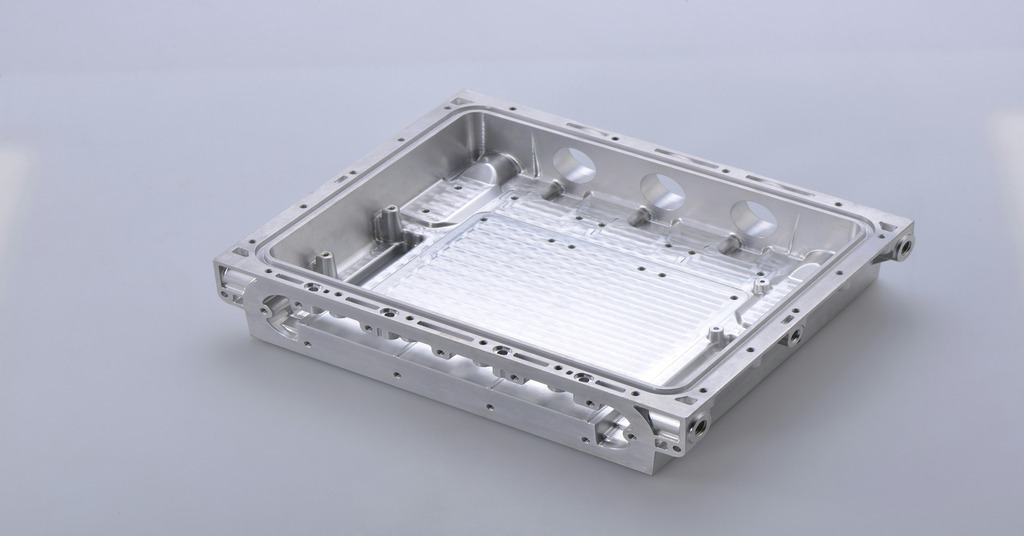
Enclosure component
CNC machining produces housings, connectors, and heat sinks with minimal tolerances, which are usually in the range of ±0.03 mm to ±0.1 mm. It is possible to note that such small dimensions are required for maintaining the quality and reliability of various types of electronic devices in different fields of their application. CNC technology is used to get finer details which are essential in electronic devices and their functioning. In consumer electronics and industrial uses, the role of CNC machining cannot be underestimated in developing technologies and the dependability of electronics in the market.
Endnotes
With the information highlighted above, you now have adequate knowledge about CNC machining. Although CNC machining is an old process, it continues to progress consistently as an industry. Whether it is in the process of seeking machines for an upcoming manufacturing process or in the process of comparing the various types of CNC technologies, this knowledge will help you arrive at the right decision for your manufacturing needs. If you want top-quality machining services, you can join our platform. We are an ISO-certified service provider in China. Whether you need parts from low volumes to larger ones, our faculty assists you from start to finish. Upload your CAD files or contact us for an instant CNC quote today
Read more:

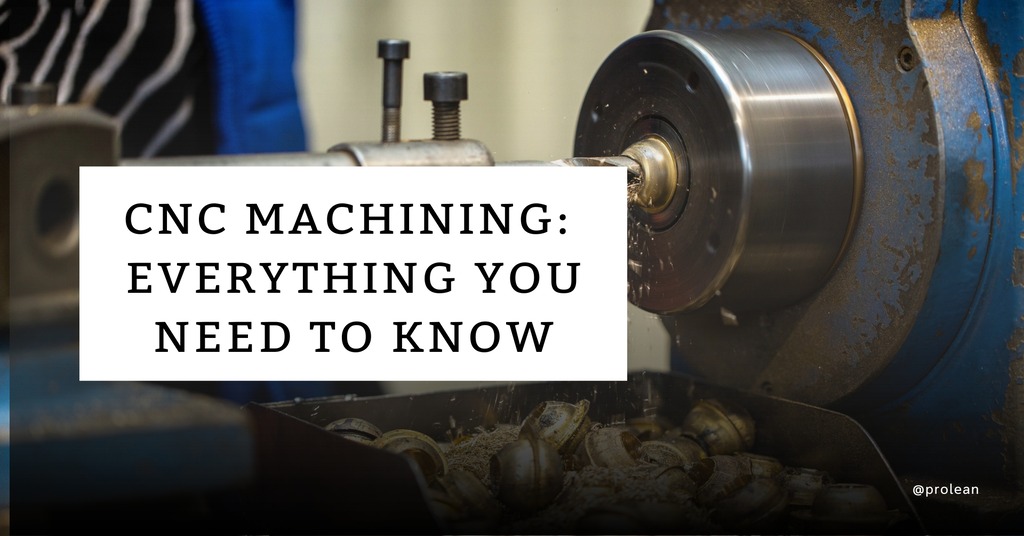
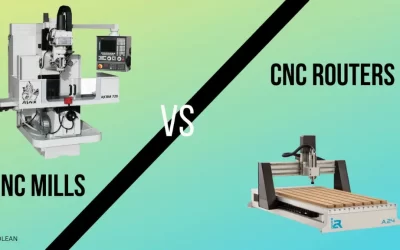
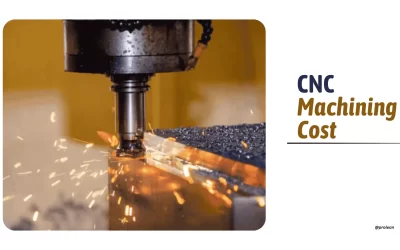
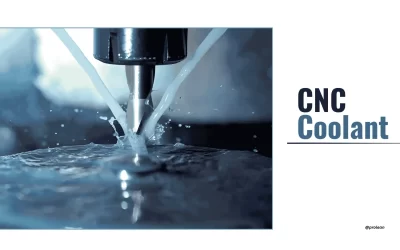
How precise parts can 5-axis CNC machines produce? I am talking about stainless steel
Hello, Amelia. Our 5-axis machines can easily achieve ± 0.0025mm. Please let us know if you need any parts.